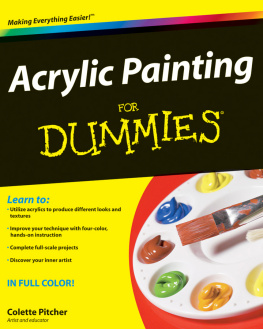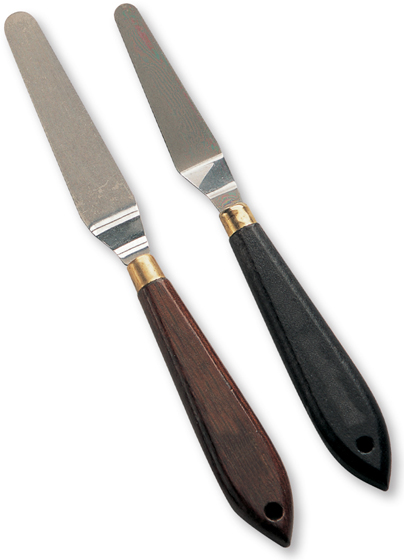Get Started Painting

Do you want to learn to paint but arent sure where or how to start? This book will help you begin to master any medium you wishfrom oil and acrylic to watercolor and pastel. Youll discover detailed descriptions of the tools and materials needed to create works in each medium, as well as information about basic techniques and special effects. Youll explore the bold, opaque colors of oil paint; the subtle, translucent beauty of watercolor; and much more as five accomplished artists guide you through a variety of lessons that demonstrate the painting process step by step, from composition and preliminary sketches to final touches and details. So what are you waiting for? Turn the page and get started painting!

CONTENTS
Oil Painting Tools & Materials
A very adaptable medium, oil lends itself to a variety of painting stylesfrom precise, realistic strokes to free-flowing, expressionistic forms. And oil paint is an ideal medium for beginners: the paints dry slowly, allowing you to take your time and correct any mistakes. Oil paints must be thinned with turpentine or another mineral spirit, which makes cleanup more difficult than with water-soluble media, but the wonderful qualities of oil make it worth the extra effort.
OIL PAINTS
Oil paints are available in two distinctive qualities: artists grade and students grade. Artists grade paints contain better-quality pigments and fewer additives, so they last longer and produce more intense color. You dont need to purchase every color you see; you can mix almost any color from just a few, such as the colors suggested in the beginners palette shown below. You can always add to your basic palette later as your skills developand your budget allows! Colors vary slightly from brand to brand, so experiment with a few different manufacturers to find which ones you like best.

Cadmium yellow light

Ultramarine blue
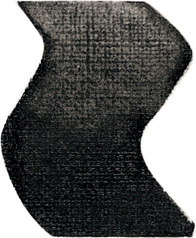
Black

Cadmium red light
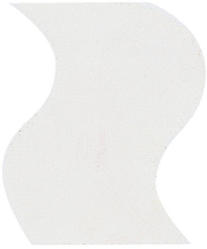
Titanium white
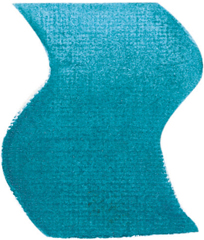
Cerulean blue
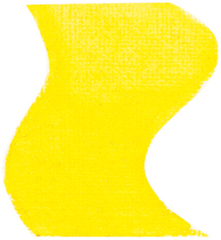
Lemon yellow
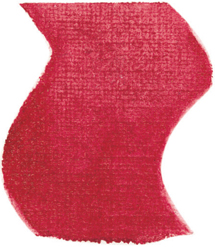
Alizarin crimson
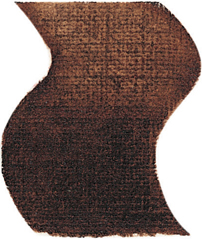
Burnt umber
BASIC PALETTE The nine colors above make a great starter set. The lessons in this book call for additional colors, as every artist has a preferred palette, but with this set, you can mix almost any color you might need. (See Color Mixing Basics on .)
PAINTBRUSHES
Oil paintbrushes are made with either natural hair or synthetic bristles, though many oil artists avoid synthetic bristles because they can be affected by the corrosive nature of oil solvents. Youll find several different brush styles to choose from, but a good starter set for beginning oil painters includes only a few brushes: two flat brushes (one large, one small), two round brushes (one large, one small), one filbert brush, and one liner (or rigger) brush. You always have the option of expanding your brush collection as your skills develop.

FLATS Flat brushes have square corners and are great for applying large amounts of paint. You can use them to make long, soft strokes.

ROUNDS round brushes come to a point, allowing you to paint fine details and vary the width of your brushstrokes.

FILBERTS Flat with a rounded tip, these brushes combine properties of both a flat and a round brush.

LINERS Also called riggers, these fine brushes are ideal for painting very small details and signing your work.
BRUSH CARE
If you take care of your brushes, they can last for several years. Never allow paint to dry in the hair or bristles; oil is destructive and tends to cling in the bristles next to the ferrule (the metal band). Wash your brushes thoroughly after each painting session, first with thinner (such as turpentine or mineral spirits), then with soap and warm (but not hot!) water. Then reshape the bristles and lay the brushes flat to dry.
PALETTE KNIVES
Palette knives are ideal for mixing colors on the palette, but they also can be used to apply paint to the support (see for more on supports). Ranging in shapes from diamond to pear, knives are useful for scraping off paint, creating textures, and blending large areas on the canvas. Use smooth, gentle strokes rather than a heavy stirring motion.
KNIVES The steep angle in the neck of painting knives keeps your hand from getting in the paint.
PAINTING SURFACES
The surface you paint on is called the support. You can apply oils to just about any kind of support, as long as it has been primed and sealed so the paints have something to stick to. For beginners, its best to purchase either pre-primed canvas board or cotton canvas that has already been stretched and primed. This way, your support is ready to use! Canvases are available in a variety of sizes and textures. A fine, dense weave (which is smooth) has very little texture, or tooth; a coarse, loose weave (which is rough) has more tooth.

CANVAS Oil painting surfaces can include canvas, glass, wood, cardboard, paper, and even metal.




